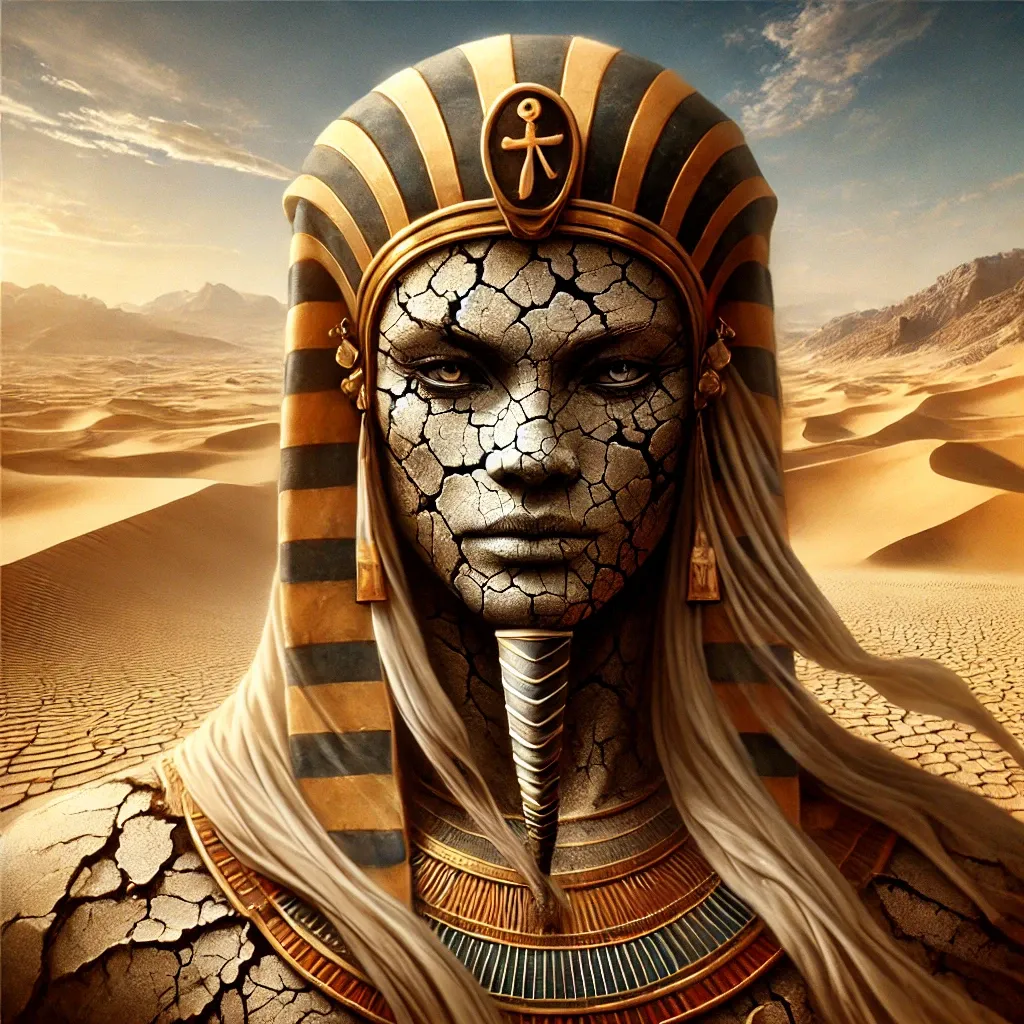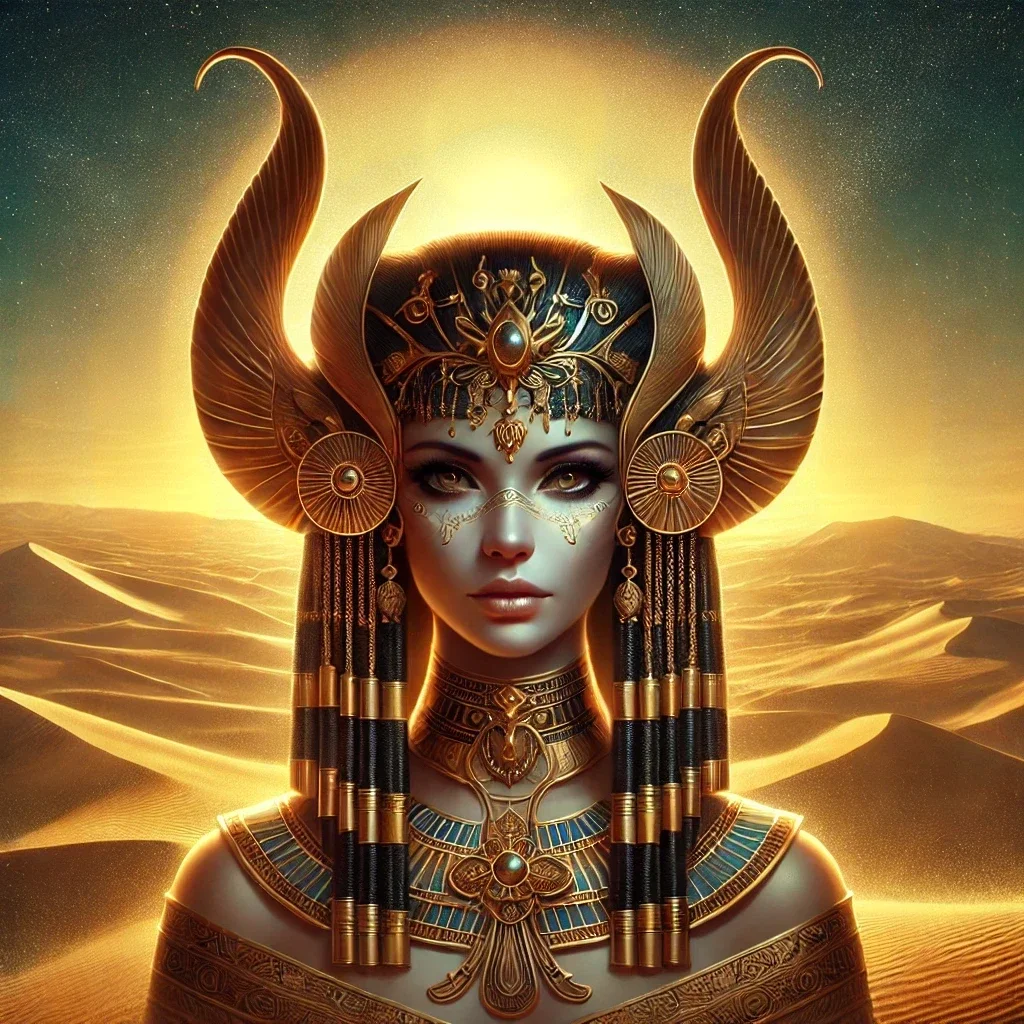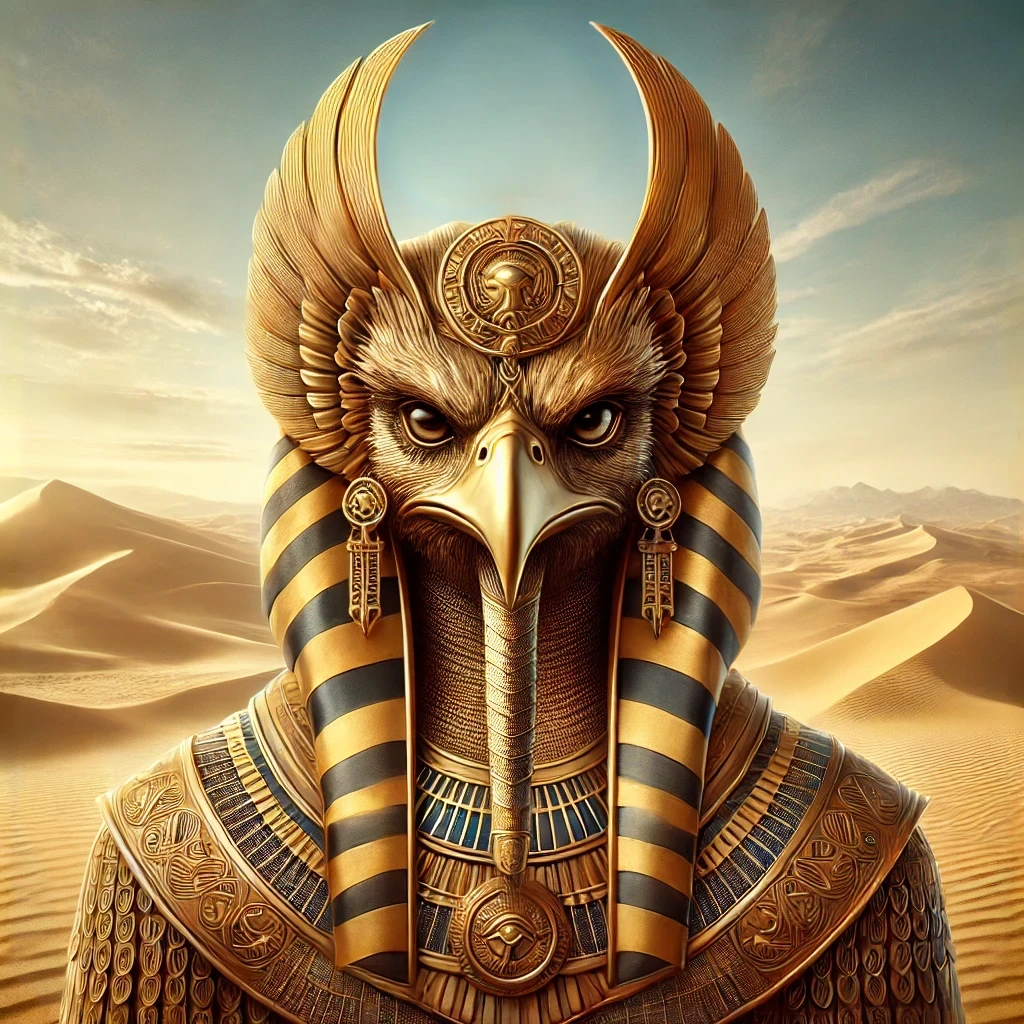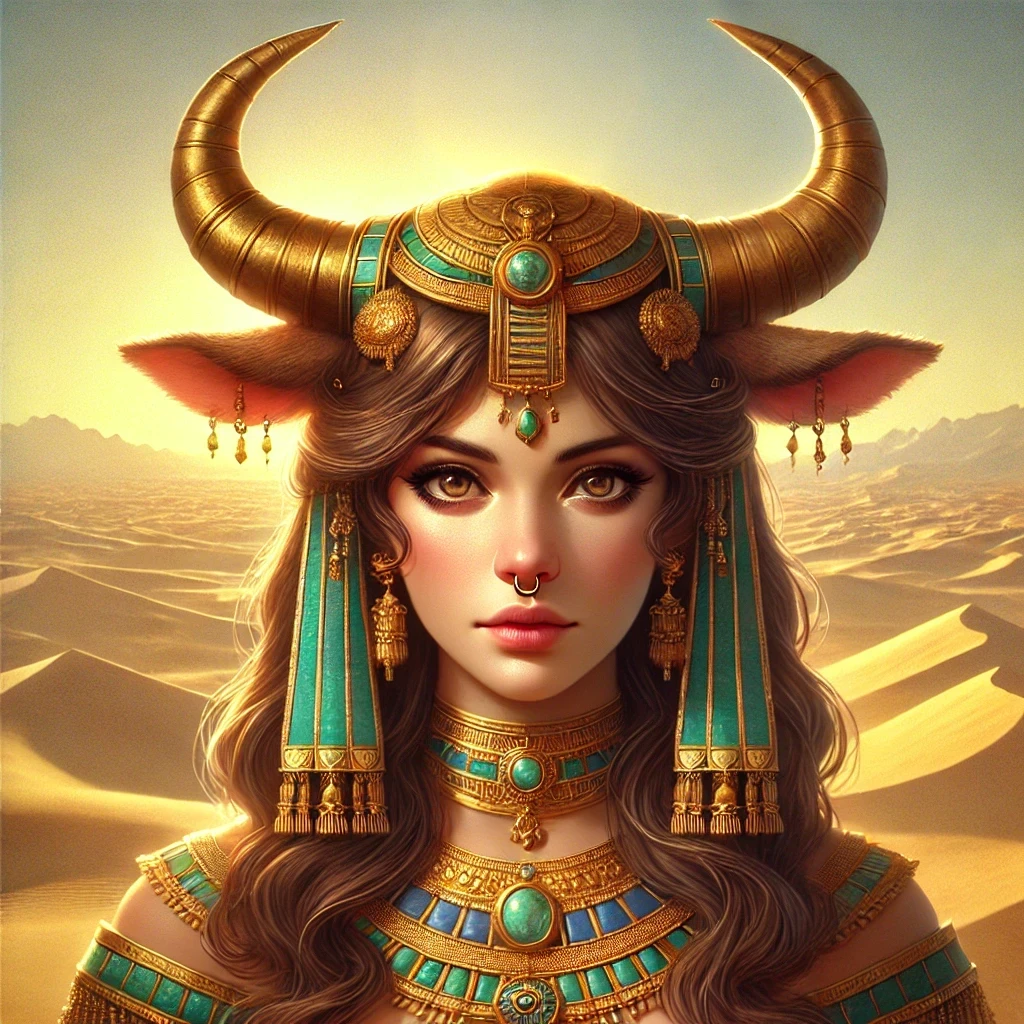The ancient Egyptian deity Geb, also called Ceb in Greek sources, was one of the most revered gods in Egyptian mythology. Known as the “Father of Snakes” and “Earth God,” this figure played a crucial role in the cosmology of ancient Egypt. His name, derived from the Egyptian word “gb,” meaning “earth” or “ground“.
Origins
The origins of Geb trace back to the earliest phases of Egyptian religious thought. He was a member of the Heliopolitan Ennead, a group of nine gods central to creation myths.
Parentage and Creation Role
Geb was the son of Shu (the god of air) and Tefnut (the goddess of moisture). His divine lineage placed him among the principal deities responsible for the creation and stability of the universe. In this role, he represented the earth, while his sister and consort Nut embodied the sky.
Worship and Early Depictions
Worship of this deity began as early as the Old Kingdom (c. 2686–2181 BCE). Texts such as the Pyramid Texts describe him as both a fertile and steadfast figure, underscoring his importance in maintaining the cosmic balance.
Appearance
Artistic Representations
Geb was often depicted as a reclining man with green or brown skin, symbolizing vegetation and the earth. In some illustrations, he is shown lying beneath Nut, his sister, while Shu separates the two, ensuring the sky and earth remain distinct.
Associated Features
Iconography frequently includes representations of animals and plants associated with the earth, such as snakes, geese, and barley stalks. The goose, in particular, became a recurring symbol for him, often seen perched on his head.
Abilities
Fertility and Prosperity
The deity governed fertility and abundance, ensuring the land yielded crops and supported life. Ancient farmers often prayed to him for bountiful harvests.
Judicial Authority
Geb was also a judge, presiding over disputes among gods and mortals alike. His authority in this realm symbolized the stability and fairness of natural laws.
Myths
The Separation of Earth and Sky
One of the most famous stories involves the separation of Geb and Nut. According to the myth, Shu forced the siblings apart, creating the division between earth and sky. Despite their separation, their love endured, with the horizon representing their longing connection.
Role in the Osirian Cycle
Geb played a pivotal role in the Osiris myth, bestowing kingship upon Osiris and later judging disputes involving his descendants. His role underscored his position as a mediator and stabilizer.
Symbolism
Objects
Artifacts linked to Geb often include earthenware and tools used in agriculture. These items reflect his role in nurturing life.
Animals
The goose and snake were sacred to him. The former symbolized his name, while the latter represented his fertility and protective nature.
Minerals and Plants
Green stones, such as malachite, were considered under his domain, as they symbolized vegetation and growth.
Relationships
Divine Family
He was the father of Osiris, Isis, Seth, and Nephthys, forming the core of Egyptian divine narratives. Each child inherited aspects of his domain and influence.
Rivalries
While primarily a nurturing figure, Geb’s relationship with his son Seth became strained due to Seth’s conflicts with Osiris and Horus. These disputes often placed Geb in a position of judgment.
Trivia
- Geb’s laughter was said to cause earthquakes, reflecting the earth’s dynamic nature.
- In certain myths, his body was believed to imprison the souls of the unworthy.
- He was sometimes associated with physical manifestations of illness, such as boils, due to his connection to the earth.
- The title “He Who Rises” was occasionally used, signifying his role in creation and resurrection.
- Geb’s green skin in depictions inspired later artistic traditions linking green to fertility and rebirth.



